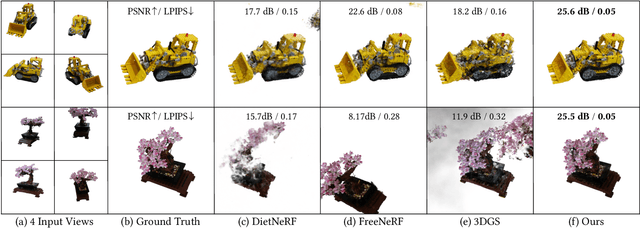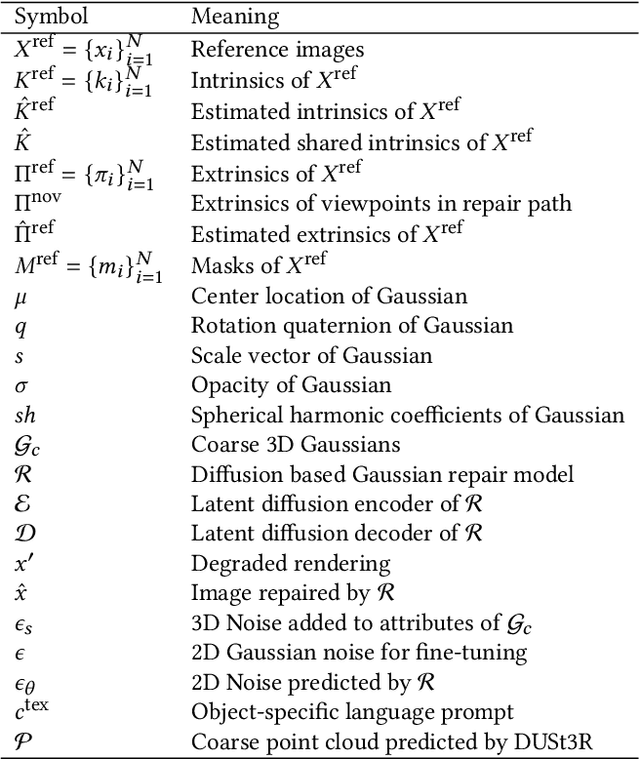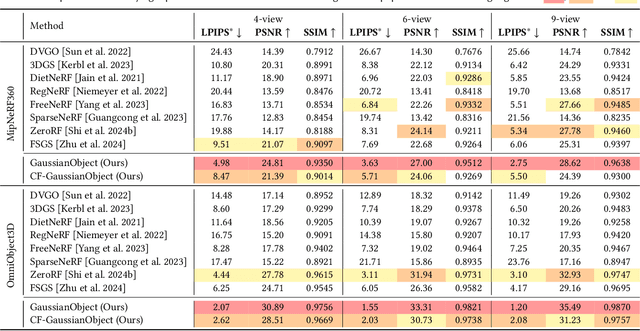Sikuang Li
EndoGSLAM: Real-Time Dense Reconstruction and Tracking in Endoscopic Surgeries using Gaussian Splatting
Mar 22, 2024Abstract:Precise camera tracking, high-fidelity 3D tissue reconstruction, and real-time online visualization are critical for intrabody medical imaging devices such as endoscopes and capsule robots. However, existing SLAM (Simultaneous Localization and Mapping) methods often struggle to achieve both complete high-quality surgical field reconstruction and efficient computation, restricting their intraoperative applications among endoscopic surgeries. In this paper, we introduce EndoGSLAM, an efficient SLAM approach for endoscopic surgeries, which integrates streamlined Gaussian representation and differentiable rasterization to facilitate over 100 fps rendering speed during online camera tracking and tissue reconstructing. Extensive experiments show that EndoGSLAM achieves a better trade-off between intraoperative availability and reconstruction quality than traditional or neural SLAM approaches, showing tremendous potential for endoscopic surgeries. The project page is at https://EndoGSLAM.loping151.com
GaussianObject: Just Taking Four Images to Get A High-Quality 3D Object with Gaussian Splatting
Feb 20, 2024



Abstract:Reconstructing and rendering 3D objects from highly sparse views is of critical importance for promoting applications of 3D vision techniques and improving user experience. However, images from sparse views only contain very limited 3D information, leading to two significant challenges: 1) Difficulty in building multi-view consistency as images for matching are too few; 2) Partially omitted or highly compressed object information as view coverage is insufficient. To tackle these challenges, we propose GaussianObject, a framework to represent and render the 3D object with Gaussian splatting, that achieves high rendering quality with only 4 input images. We first introduce techniques of visual hull and floater elimination which explicitly inject structure priors into the initial optimization process for helping build multi-view consistency, yielding a coarse 3D Gaussian representation. Then we construct a Gaussian repair model based on diffusion models to supplement the omitted object information, where Gaussians are further refined. We design a self-generating strategy to obtain image pairs for training the repair model. Our GaussianObject is evaluated on several challenging datasets, including MipNeRF360, OmniObject3D, and OpenIllumination, achieving strong reconstruction results from only 4 views and significantly outperforming previous state-of-the-art methods.
 Add to Chrome
Add to Chrome Add to Firefox
Add to Firefox Add to Edge
Add to Edge